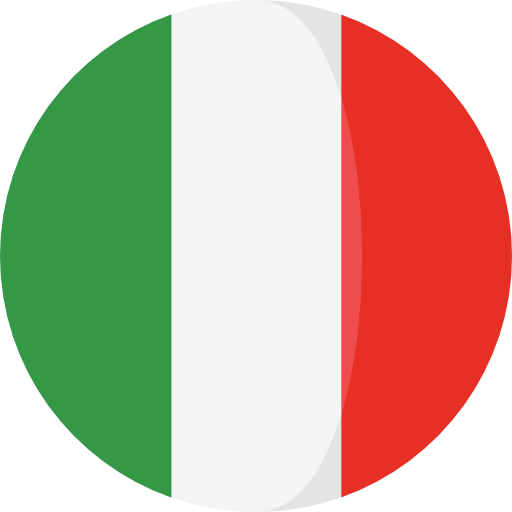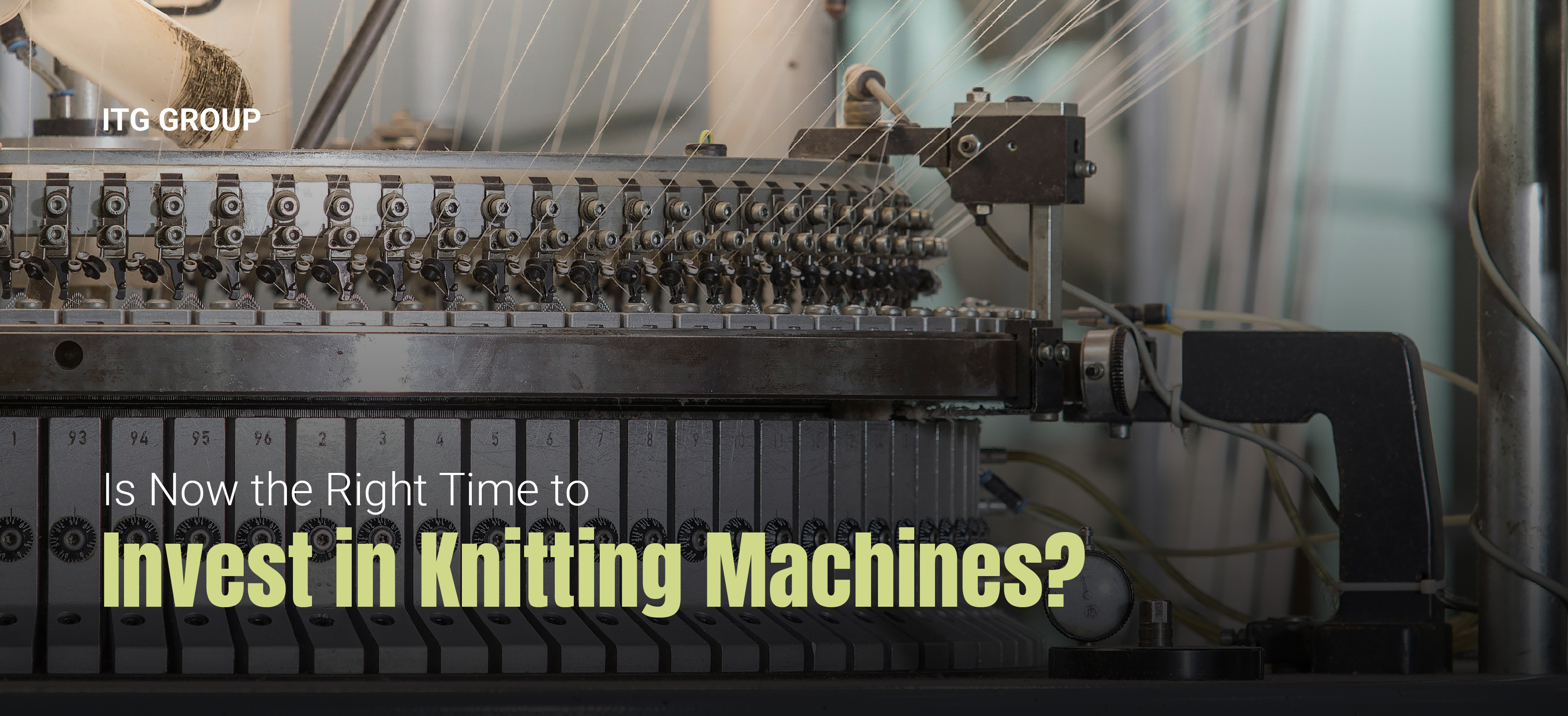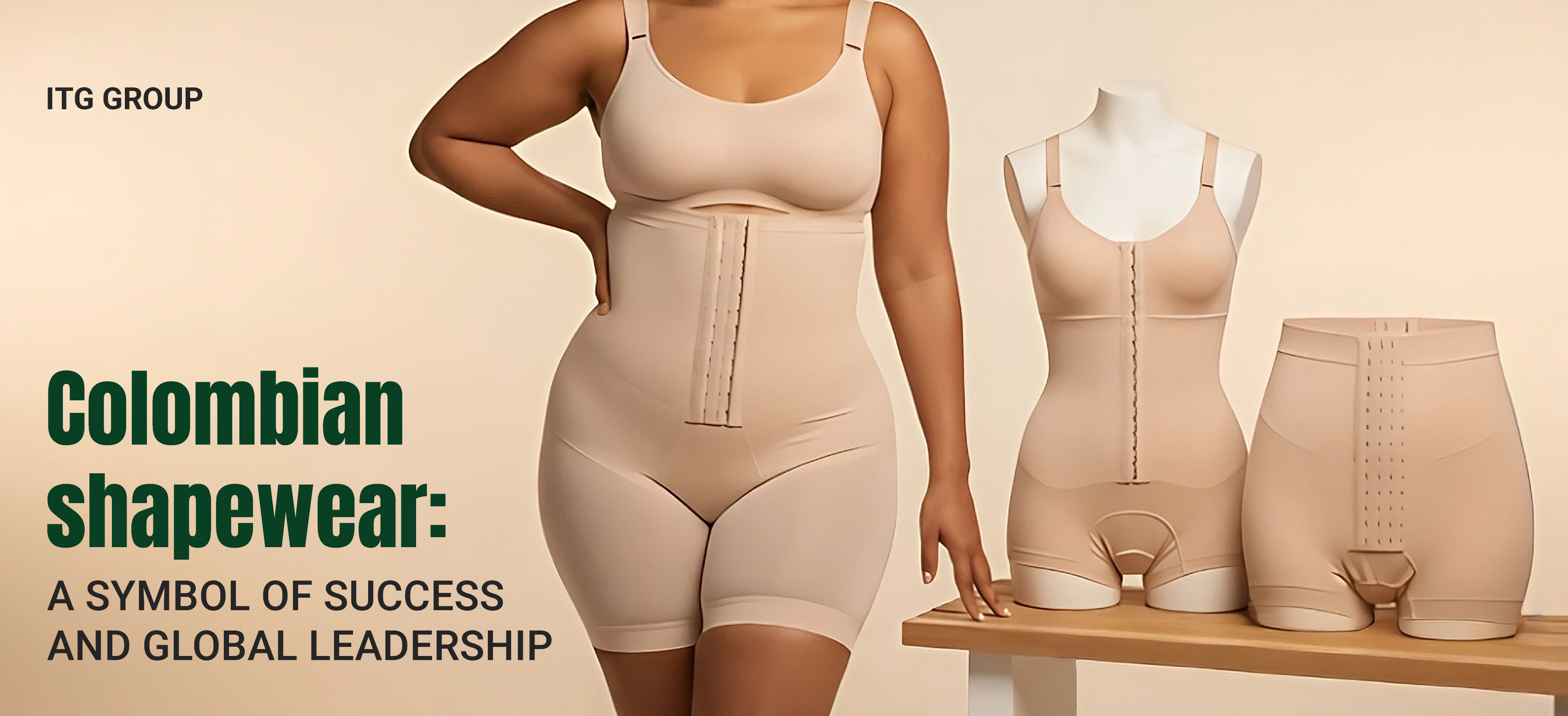- Innovazione
- Nov 19, 2025
- 0
Is Now the Right Time to Invest in Knitting Machines?
The textile industry has always been driven by innovation. From mechanical looms to today’s advanced systems, every leap in technology has reshaped how fabrics are produced, improved efficiency, and expanded design possibilities. Among the most impactful innovations of recent decades are modern knitting machines, which play a central role in producing seamless garments, high-performance fabrics, and versatile knitwear. But is now truly the right time to invest?
According to Consegic Business Intelligence, the global market for large knitting machines is expected to grow from USD 1.24 billion in 2022 to USD 1.92 billion by 2030, representing a compound annual growth rate (CAGR) of 5.7%. This steady increase reflects rising demand for knitwear across multiple segments, including sportswear, athleisure, medical textiles, and technical fabrics.
The popularity of comfortable, stretchable garments, combined with the expansion of on-demand production, has created a favorable environment for knitting machines. Digital customization and shorter production cycles are reinforcing the need for equipment that adapts quickly to changing consumer trends.
While growth projections are promising, investment decisions must go beyond the numbers. Insights from industry analyses highlight that return on investment (ROI) depends largely on selecting the right type of machine and aligning production capacity with demand.
Modern knitting machines offer the flexibility to produce different types of fabrics using the same equipment by simply installing interchangeable cylinders. Each cylinder allows for variations in gauge and structure, enabling manufacturers to shift from lightweight fabrics to heavier knits without investing in multiple machines. This system not only maximizes the versatility of production but also reduces the need for large-scale equipment fleets, making it easier for companies to adapt quickly to changing market demands.
Equally important is aligning investment with actual production needs. Overestimating capacity can delay ROI, while underestimating demand risks missing growth opportunities. Companies should carefully evaluate their product lines, target markets, and access to reliable technical support before making a purchase.
With global demand for knitwear on the rise and ongoing technological improvements making knitting more efficient and flexible, this is a favorable moment to invest. Still, the most successful outcomes will come from businesses that combine optimism about market growth with disciplined planning.
At ITG Group, we support this journey by offering high-quality knitting machines, second-hand equipment in excellent condition, and a complete range of spare parts and accessories. Whether you are upgrading, expanding, or maintaining your production, we provide the solutions to help your textile business thrive.
Sources:
https://www.consegicbusinessintelligence.com/large-circular-knitting-machine-market?
- Innovazione
- Oct 17, 2025
- 0
Colombian shapewear: a symbol of success and global leadership
Shapewear has become one of the flagship products of Colombian fashion. The country is not only recognized for its creativity and quality in clothing manufacturing, but has also established itself as the leading exporter of shapewear garments in the Americas and the second largest worldwide, behind only China.
This leadership was not achieved overnight. Since its inception, when so-called “cinturillas” (waistbands) were the most common items, the industry has evolved into a diverse portfolio that includes bodysuits, control jeans, sets, and one-pieces. Today, these garments not only serve an aesthetic function, but also have medical and post-operative applications, further expanding their market.
According to figures from DANE, in 2024 Colombia exported more than 1,300 tons of shapewear and control garments, with a value of over $54 million. The main destinations for these exports are the United States and Mexico, markets where Colombian design, quality, and innovation have been widely accepted. In addition, the sector has managed to maintain annual business of more than $55 million on average, demonstrating its stability and capacity for growth.
The success of shapewear is part of a broader context: the sustained growth of the Colombian fashion industry. According to figures from Inexmoda, in the first half of 2025, the country recorded a 3% increase in its textile and fashion exports. Colombia leads South America in the export of products such as underwear and jeans, ranks first in flat fabric garments in the region, and is the leading exporter of swimwear in South America and the second largest in Latin America and the Caribbean. These figures reflect a sector that has grown by 7% in the last five years, consolidating itself as an economic engine and ambassador of national innovation.
In this ecosystem, knitting looms play a key role in the creation of high-quality fabrics for the manufacture of shapewear. ITG Colombia, as a leading company in textile machinery, offers knitting looms that allow companies to produce fabrics with elasticity, resistance, and comfort, essential characteristics for control garments that conquer international markets. This technology ensures that manufacturers can offer a competitive, high-quality end product.
The international recognition of Colombian shapewear is due to several factors: the use of quality raw materials, the development of state-of-the-art textile technologies, and the ability of designers and manufacturers to combine functionality with aesthetics. In addition, the rise of trends related to wellness, functional fashion, and sustainability has further boosted demand.
In conclusion, shapewear is not just a successful product: they represent the ability of Colombian fashion to compete and lead on the global stage. With constant innovation, entrepreneurial vision, and a commitment to quality, this segment will continue to be a source of pride for the country and an opportunity for growth in the textile and apparel industry.
Source: https://co.fashionnetwork.com/news/Las-fajas-y-prendas-de-control-colombianas-al-alza,1763442.html
- Innovazione
- Sep 11, 2025
- 0
Smart Dyeing: How AI Cuts Waste in Textiles
In conventional dyeing, colors are applied to wet fabrics—with unpredictable shifts occurring during drying. These non-linear color changes often lead to dyeing errors that can only be detected late in the process. As Jasper explains, by the time these mistakes surface, entire batches may need re-dyeing, contributing to massive material and resource waste.
To tackle this issue, Jasper and his team developed five machine learning models to map the complex transition between wet and dry color states. Their neural network stood out with exceptional accuracy: a CIEDE2000 error as low as 0.01 and a median error of 0.7, well below the industry’s typical acceptability threshold of 0.8–1.0. In comparison, traditional methods produced errors up to 13.8—demonstrating the vast improvements possible with machine learning guidance.
This AI-driven prediction enables manufacturers to identify and correct color deviations early, reducing re-runs, minimizing resource waste, and saving time and cost across production workflows.
Machine learning isn’t only enhancing color accuracy. Numerous textile manufacturers are leveraging AI and ML for real-time monitoring, resource optimization, and predictive maintenance. AI systems analyze data from dyeing equipment to ensure consistent temperature, chemical balance, and application uniformity—drastically improving efficiency and reducing downtime.
By using models trained on historical data, AI algorithms accurately forecast energy and water usage and optimize formulations to avoid overuse. Coupled with automation, this enables dramatic reductions in chemical and resource consumption, supporting sustainable production standards.
Given the environmental footprint of traditional dyeing—particularly its high water, energy, and chemical demands—machine learning models offer a powerful solution. With improved prediction and real-time response, factories can significantly reduce waste, lower carbon emissions, and limit harmful chemical runoff. These practices align with ethical and regulatory demands across global markets.
Moreover, optimizing dyeing operations through AI translates into business advantages: reduced material costs, fewer quality control failures, faster turnarounds, and higher product consistency. This positions brands and manufacturers to deliver better value while meeting customer and regulatory expectations for sustainability.
While promising, widespread adoption of machine learning in textile dyeing is still emerging. Challenges include the need for robust data collection, integration with existing systems, and investment in AI-ready infrastructure. But as textile makers continue to digitize operations and gather production data, the path is clear for scalable, intelligent dyeing processes that deliver reliability and resource efficiency.
At ITG Group, we recognize the transformative potential of machine learning in textile dyeing. While we continue monitoring these innovations, our goal is to help our clients stay ahead through efficient, high-quality textile production. By offering machinery, spare parts, and advisory support tailored to each of our clients needs, we aim to empower them to produce fabrics that lead the market. We’re your commercial ally in the textile industry, committed to weaving success together.
- Industria tessile
- Aug 13, 2025
- 0
What is traceability in the textile industry and why is it so important?
Textile traceability refers to the ability to track the journey of a garment or other product from its origin—the raw material—to its final destination: the consumer or recycling. This system documents each stage of the production process (such as spinning, weaving, dyeing, finishing, and distribution), allowing us to know how, when, and where it was manufactured, with what materials, and under what conditions.
The importance of traceability
Transparency and trust
In an era where consumers demand to know the origins and impact of what they buy, traceability offers security and credibility. When a brand can demonstrate that its products respect labor rights and environmental criteria, it generates trust and loyalty.
Social and environmental responsibility
Traceability ensures that good practices are followed throughout the chain, preventing labor exploitation and minimizing pollution. It also facilitates recycling, as knowing the materials used is essential for separating and reusing garments correctly.
Quality and safety
An effective system allows for the rapid detection and isolation of faults, such as dyeing defects or composition problems, improving quality control. It also helps to comply with strict regulations, such as REACH in the European Union.
Operational efficiency
Recording each batch and movement reduces errors, delays fewer processes, and optimizes the supply chain.
Steps to implement traceability in textiles
- Product or batch identification: assign unique codes such as RFID or QR codes from raw material to final product
- Process recording: document each stage of the process (dyeing, cutting, manufacturing), including date, location, and operator data.
- Use of technology: integrate blockchain for immutable records, IoT and RFID for real-time monitoring, and ERP software to consolidate data.
- Information exchange: ensure compatibility between systems to share data between suppliers, manufacturers, and distributors.
Faced with social, regulatory, and commercial pressure, large groups such as Kering, H&M, and LVMH have already implemented tools such as the blockchain-based AURA platform to track their products. Initiatives such as Fashion Revolution promote transparency in manufacturing, while campaigns such as Clean Clothes push for fair working conditions. Certifications (e.g., GOTS or Global Recycled Standard) have also gained relevance by supporting brands real commitment.
Traceability in the textile industry is much more than a documentary exercise: it represents transparency, environmental responsibility, safety, and efficiency. To become the norm, the use of technologies such as blockchain, IoT, RFID, and integrated management platforms, together with global standards and consumer pressure, is essential. Only then will truly ethical and sustainable fashion be achieved.
ITG Group recognizes that the products generated by its customers are distinguished by their quality, and therefore understands the importance of supporting that value with increasingly transparent processes. Traceability not only allows the origin and conditions under which a textile was produced to be demonstrated, but also strengthens confidence in its excellence. That is why ITG Group accompanies its customers on the path toward a more traceable, transparent industry that is prepared for the demands of todays consumers. We are your business partner in the textile industry.
Information obtained from:
https://www.vogue.mx/moda/articulo/trazabilidad-textil-que-es-y-como-funciona

 Italiano
Italiano
 Inglese
Inglese




